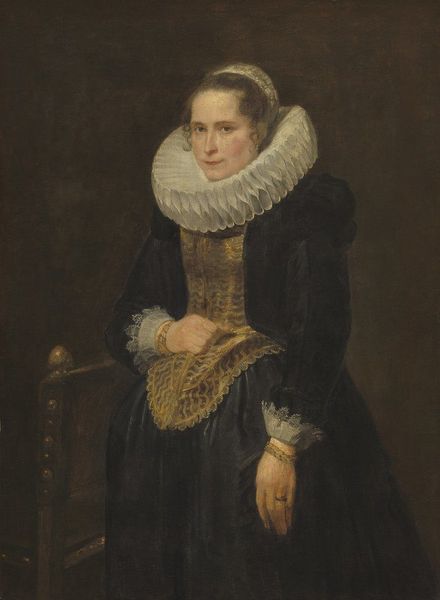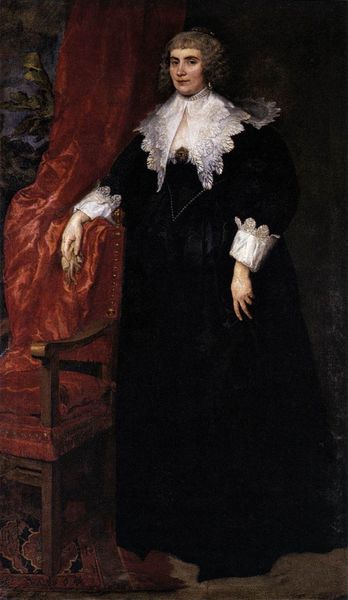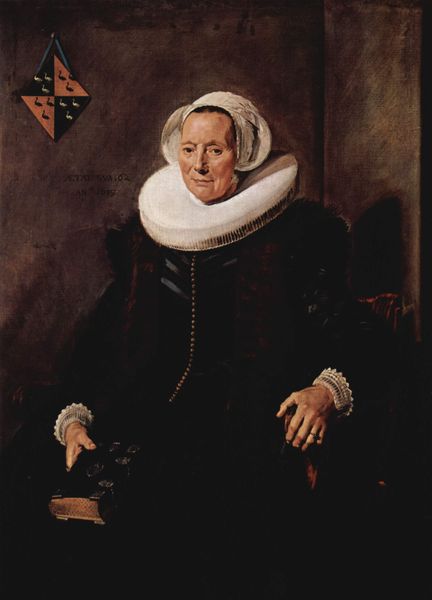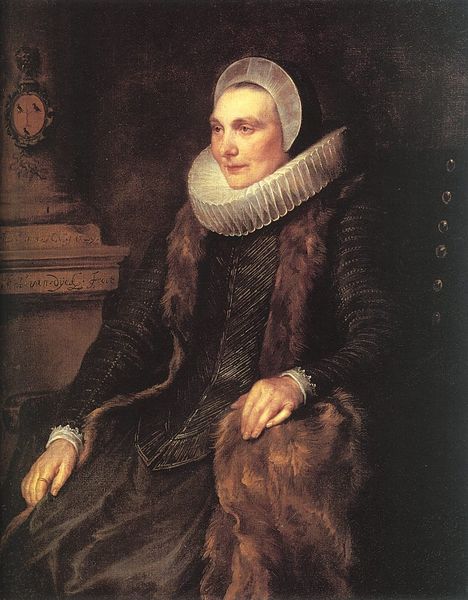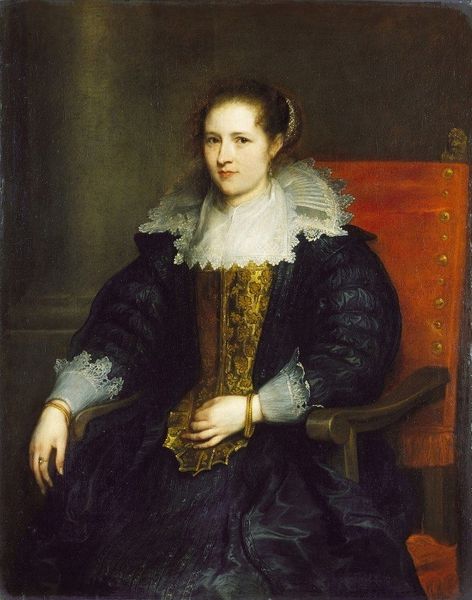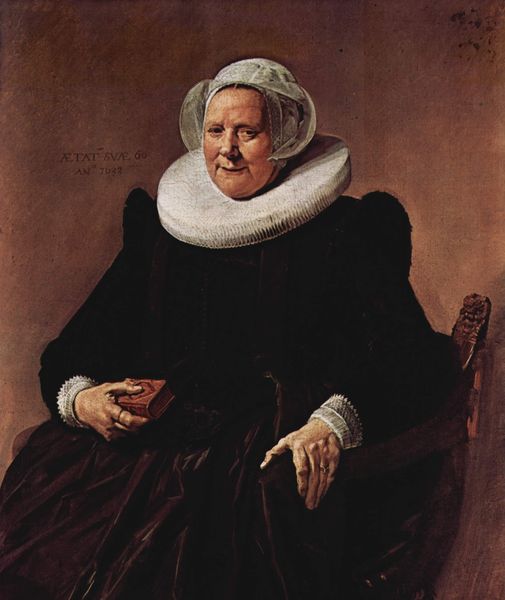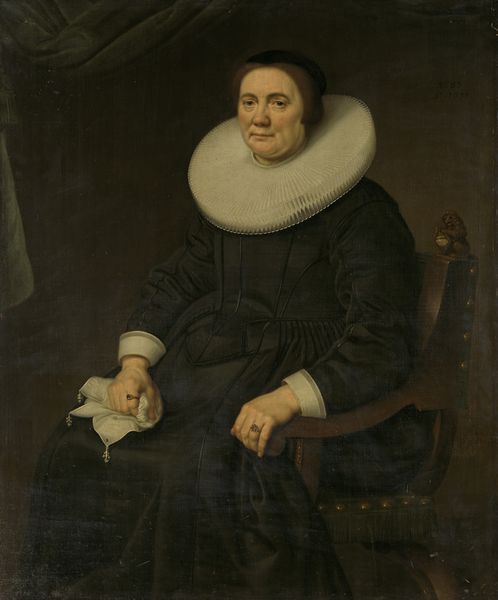
painting, oil-paint
#
portrait
#
figurative
#
baroque
#
painting
#
oil-paint
#
figuration
Copyright: Public Domain: Artvee
Editor: Here we have Anthony van Dyck’s "Portrait of a Genovese Lady," painted around 1622, in oil. She strikes me as very composed and serious. What social or historical context helps to clarify what we are seeing in this painting? Curator: Look closely at the details of her dress, particularly that striking ruff and her dark velvet gown. This wasn't just about fashion; it was a visual declaration of power and status in a rigidly hierarchical society. What does it mean for a woman in 17th century Genoa to project such an image? Editor: It suggests that women had influence, but only within specific bounds that served power? Curator: Precisely. These portraits were often commissioned to cement family alliances and showcase lineage. Her controlled gaze and formal pose reinforce her role within this patriarchal system, which makes her seem so imposing, wouldn't you agree? But her gaze engages us and even challenges. Editor: It feels that her identity comes across through the work, although carefully constructed through her attire. What's especially captivating to me is the subtle challenge in her eyes despite all that visual constraint. Curator: Absolutely. It prompts us to question what these visual constraints signify about her place in society. So much of identity is culturally imposed. Even seemingly simple portraits open conversations around representation, gender and power. Editor: I’ve certainly never considered portraits through that perspective before. It helps to contextualize both the limits and possible agency afforded to women of that class. Curator: Exactly! Understanding the historical context adds many new exciting layers.
Comments
No comments
Be the first to comment and join the conversation on the ultimate creative platform.
